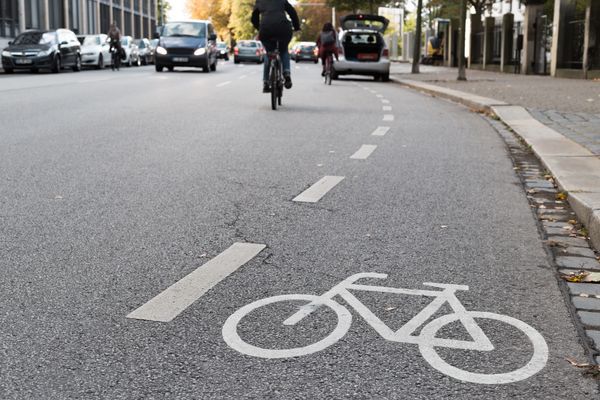Studies have shown that protected bike facilities, including physical barriers separating bike lanes from motor vehicle lanes, can go a long way toward reducing traffic-related fatalities and severe injuries, especially in large cities. Cyclists also generally feel safer and have a greater incentive to use bicycles when these types of bike lanes exist. However, the Insurance Institute for Highway Safety (IIHS) published a study showing that not all protected bike lanes are created equal. Instead, protected bike lanes vary in the degree to which they reduce the risk of injury in traffic crashes.
Protected bike lanes are those with a physical barrier that separates them from other traffic, whether it is in the form of landscaping, a curb, posts, or parking spots. These lanes are relatively new to the U.S., but they are gaining in popularity, as the safety impact of non-barrier bike lanes has been inconsistent throughout various studies. As interest in cycling, whether for commuting or exercise, has increased, so have bicyclist deaths, thus prompting more cities to add bicycle infrastructure to existing streets.
Generally, when bike lanes are on protected lanes on bridges or greenways, cyclists are safest. Bicycle riders on street-level protected lanes, however, have a much greater chance of injury due to the potential to encounter vehicles at intersections, driveways, and alleys. Pedestrians also are more likely to enter street-level bike lanes, increasing the risk of injuries to bicyclists.
As a result, although protected bike lanes generally are safer for bicyclists, the location of the protected bike lanes also impacts their level of safety. For instance, two-way bike lanes located at street level next to two-way vehicle traffic, with multiple intersections, alleys, and driveways crossing them, tend to be the site of more crashes for bicyclists than protected lanes in other locations.
Bonnici Law Group has the experience and knowledge that you need when you are filing a personal injury claim following a bicycle accident. We know how to help you create and maintain a strong claim for compensation and obtain the best outcome possible in your case. Do not hesitate to contact Bonnici Law Group at 858-261-5454 or help@bonnicilawgroup.com.

Bicycle, Injury, and Disability Legal Team in in Westwood, CA
Westwood, CA, is a lively and diverse neighborhood located in the heart of Los Angeles.
Personal Injury in West Hollywood, CA
West Hollywood, California, is a vibrant and dynamic city in the heart of Los Angeles, renowned for its artistic flair, trendy boutiques, and world-class entertainment scene.


